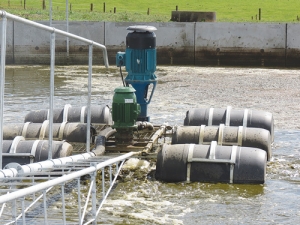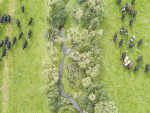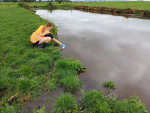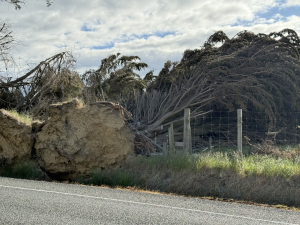Farm dairy effluent is a natural, dilute liquid fertiliser.
It contains nitrogen (N), phosphorus (P), potassium (K), magnesium (Mg), sulphur (S) and trace elements that you would normally pay to have applied to pasture.
Think of dairy effluent as a resource, not a waste.
When spread over land and applied in timely fashion, the effluent of 100 cows can save farmers substantial money. This saving could be much higher for high input farms, e.g. farms feeding supplements.
Applying the maximum amount of nitrogen from effluent allowed per year (150kg/ha for grazed grass), dairy shed effluent also provides about:
◦ 20kg phosphate per hectare
◦ 117kg potassium per hectare
◦ 20-30kg sulphur per hectare
◦ Smaller amounts of magnesium and calcium.
Applying effluent
Effluent management systems in place on your farm should give you enough flexibility so that you don't irrigate:
◦ When soil is waterlogged (too wet to absorb the effluent)
◦ If there is an equipment breakdown.
Remember to cover water troughs when irrigating effluent.
Protect waterways on your farm by:
◦ Not irrigating within 50m of a water supply
◦ Leaving a strip of non-irrigated land next to all watercourses – at least 20m wide
◦ Ensuring that spray drift isn't getting into nearby streams or rivers.
Soil – a living filter
Soil acts as a living filter. It treats the applied effluent by changing it:
◦ Physically – filtering out effluent particles, breaking them down and incorporating them into the soil structure
◦ Chemically – absorbing nutrients and making them available to plants
◦ Biologically – harmful micro-organisms (such as bacteria) present in the effluent are retained by the soil, or are killed when the effluent dries or when they become exposed to sunlight.
Don't apply too much
Soil can only filter so much effluent at a time. It's important to match the irrigation depth to the capability of the soil. Land with impeded or artificial drainage, high or rising water tables or slopes greater than 7 degrees have a higher risk of over-application, and therefore application depths should be adjusted accordingly to reflect soil and weather conditions. Note this could be less than the maximum application depth stated in Waikato Regional Council rules.
Too much effluent can:
◦ Kill pasture – especially where effluent has 'ponded' on the soil surface
◦ Pollute nearby streams and rivers – where it runs off paddocks into waterways
◦ Pollute groundwater – by seeping too deep into the soil
◦ Be an ineffective use of nutrients -- by seeping past the root zone before the plant can utilise it.











